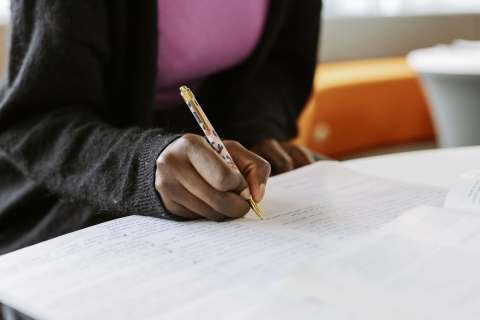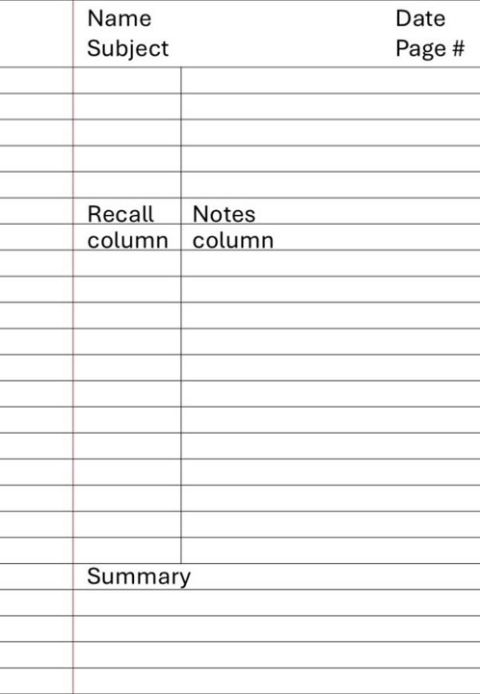
Main navigation - Library
Secondary Menu - Library
Secondary menu
Search suggestions update instantly to match the search query.
Taking good notes might sound boring to some but read on...

by Anne Kathrin-Reck, CCI Faculty
Did you know there is a difference between taking notes and making notes?
Notetaking means taking notes from original source (later you decide what to quote or paraphrase).
Notemaking, however, is your active engagement with what you have read/heard and will help develop your original argument or point of view.
Burns et al. (2010) suggest a number of good options:
- Linear notes (most likely just notes taken from speaker/ source text)
- Cornell notes (active notes)
- Mindmaps (active notes for creative people, good for idea showers),
- Concept maps (offers a graphical representation of key concepts organised hierarchically – and with relationships between concepts or sub-concepts indicated by links and connections),
- Pattern notes (the idea here is that students select and connect information for themselves, enabling them to synthesise a range of complex ideas).
My personal favourite, even though mindmapping has grown on me in recent years, is the Cornell method (originated at Cornell university in the USA). If you are not familiar with it – here is a brief overview:
Before your session
Divide your paper into 3 sections. Traditionally, this looks something like this (ignore the measurements):

Again, my personal preference is to move the green section (my notes on info) to the right hand side. I am right-handed, so it makes sense to me not to scribble over my lecture / book notes. Also, why not add in the TOP LINE the date and topic of lecture or full reference of what you are reading.
Further information on how Cornell notes work is available from Cornell University themselves.
During the session
You are questioning the text:
- I think this is an IMPORTANT point/ quote! I also know THIS example!
- I need to check THAT fact! I need to FIND the definition for this word!
- I need to ASK about this in the seminar! I have follow-up QUESTIONS!
- I am ADDING thoughts/ feelings.
Did you notice, there is some critical thinking going on here?
By doing this, you are making yourself aware of what you are learning and how you gain your own voice.
After the session
You can, of course, annotate your notes afterwards. You will very likely be revisiting your lecture notes when you are searching for material for essays or in preparation for tests/ exams.
A note on the pragmatics of taking notes
Have you noticed that writing by hand seems to connect your pen with your brain? Too easily, people just cut and paste directly into a word document which can lead to unwilling plagiarism. Also, I’m sure, the information bypasses their brains! Writing things down will generally improve better recall.
Burns et al (2010, np) summarise as follows: ‘good note-making strategies involve not just passively summarising […], but actively absorbing, analysing, reflecting upon and using information. We argue that in this way, notemaking places the student at the centre of their learning, and thus can provide the potential for a transformative experience.’
Remember, notetaking is necessary, but notemaking is the next step and is an empowering practice for you. Try it next time!
Reference
Burns, T., Sinfield, S., Holley, D., & Hoskins, K. (2010) Very urgent, very difficult and quite possible: Changing students’ attitudes to notemaking by encouraging user generated content. Journal of Learning Development in Higher Education, 2. https://journal.aldinhe.ac.uk/index.php/jldhe/article/view/48/42

